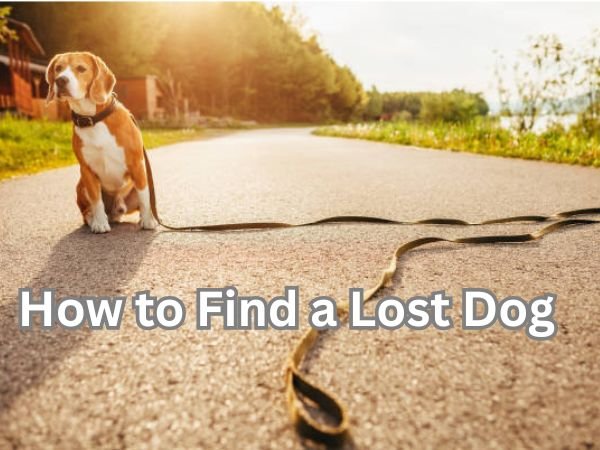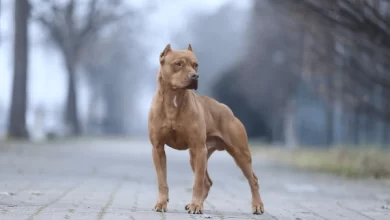
Losing a beloved dog is every pet owner’s nightmare. In those frantic first moments, panic and worry can cloud your judgment, making it easy to overlook the best ways to bring your furry friend home. If you’re searching for advice on how to find a lost dog, you’re not alone—and you’re in the right place. Many people make simple but critical mistakes during their search, often without realizing it. These errors can delay your reunion or, worse, put your dog in danger.
In this article, we’ll reveal seven shocking mistakes to avoid when your dog goes missing. By steering clear of these common pitfalls, you’ll give yourself the best chance of a happy reunion. Let’s make sure your search is smart, swift, and successful.
Mistake #1: Waiting Too Long to Start Searching-How to Find a Lost Dog?
Losing your dog is a stressful moment, but the biggest mistake you can make is waiting before you start looking. Acting fast is the key to bringing your furry friend home safely.
Why Immediate Action Is Critical
- Dogs Move Fast: Dogs can cover a lot of ground in a short time. Some can travel several miles within just a few hours, especially if they’re scared or excited.
- Best Chance for a Quick Reunion: The first hours after your dog goes missing are the most important. Most lost dogs are found within a mile of where they disappeared, especially if you start searching right away.
- Reduces Risk: The longer you wait, the farther your dog might wander, making it harder to find them. Immediate action also helps prevent your dog from getting into dangerous situations or being picked up by someone else.
How Dogs Tend to Stay Nearby Initially
- Close to Home: Many lost dogs stay close to where they went missing, at least at first. They might hide in nearby bushes, under porches, or even circle back to familiar spots in your neighborhood.
- Hiding Out: When frightened, dogs often look for quiet, safe places to hide. This means your dog could be just a few houses away, waiting for things to calm down before coming out.
- Quick Search Pays Off: Searching your home, yard, and immediate neighborhood right away increases your chances of finding your dog before they travel farther.
What You Should Do
- Start Searching Immediately: Don’t wait and hope your dog will come home on their own. Begin looking as soon as you notice they’re missing.
- Check Hiding Spots: Look under decks, behind bushes, in garages, and other small spaces where your dog might hide.
- Ask for Help: Get neighbors, friends, and family involved right away. The more eyes looking, the better.
- Expand Your Search: If you don’t find your dog quickly, widen your search area. Remember, dogs can move fast and may not stick to familiar routes.
Taking immediate action gives you the best chance of a happy reunion. Don’t wait—your quick response can make all the difference in bringing your beloved dog home safe and sound.
Mistake #2: Not Using Social Media and Online Resources
When searching for a lost dog, overlooking social media and online tools is a common mistake. These platforms can connect you with thousands of people in your area within minutes, making them some of the most powerful resources for finding your furry friend.
The Power of Social Media Groups
Social media groups are like digital neighborhoods—full of people who care and want to help. Posting about your lost dog in these groups can quickly spread the word far and wide.
- Facebook Lost Pet Groups: Many communities have dedicated Facebook groups for lost and found pets. Sharing your dog’s photo, description, and last known location in these groups can reach local animal lovers and increase the chances of a sighting or safe return.
- Nextdoor: This neighborhood-focused app connects you directly with people living nearby. A post on Nextdoor alerts your immediate community, who are most likely to spot your dog or have helpful information.
- Instagram and X (formerly Twitter): Use clear photos and local hashtags like #LostDog and your city’s name to boost visibility. These platforms are great for reaching a wider audience quickly.
Tip: Always make your posts public and ask friends to share them. The more eyes on your post, the better.
Lost Dog Apps and Online Resources
Specialized apps and websites are designed to help reunite lost pets with their families. They offer features like instant alerts, searchable databases, and even facial recognition.
| Platform/App | What It Does | Why It Helps |
| PawBoost | Posts your alert to a huge network, including Facebook and local pet lovers | Massive reach, quick local alerts |
| Petco Love Lost | Uses facial recognition to match lost and found pets nationwide | Advanced tech, free to use |
| Pet FBI | Free national database for lost and found pets | Easy to search and post |
| Finding Rover | Facial recognition app for lost dogs and cats | Matches photos to found pets |
| Nextdoor | Neighborhood app for local alerts and posts | Connects with nearby residents |
| PawMaw | Lost pet recovery website with high success rate | Broad online reach |
How to Use These Tools Effectively
- Create a detailed post: Include a clear, recent photo, your dog’s name, breed, color, last known location, and your contact info.
- Use proper hashtags: Add tags like #LostDog, #LostPet, and your city or neighborhood to help people find your post.
- Update regularly: Keep your posts current with new information or sightings.
- Check comments and messages: Respond quickly to any leads or questions.
Why This Matters
Social media and online resources can reach people who might not see flyers or hear about your lost dog in person. Many lost dogs are found because someone saw a post online and recognized the pet in their neighborhood. By using these tools, you give your dog the best chance of coming home.
Mistake #3: Neglecting to Inform Local Shelters and Vets
When your dog goes missing, one of the biggest mistakes you can make is forgetting to contact local animal shelters, rescues, and veterinary clinics. These places are often the first stop for people who find lost pets, and reaching out quickly can make all the difference in bringing your dog home.
Why Contacting Shelters and Vets Is So Important
- Central Hubs for Lost Pets: Most found dogs are brought to animal shelters or vet clinics by Good Samaritans or animal control. If your dog is there and you haven’t reported them missing, staff may not know who to contact.
- Time Is Critical: Many shelters only hold lost pets for a short period—sometimes just 72 hours—before they become available for adoption or, in rare cases, are euthanized. Reporting your dog missing right away gives you the best chance of a reunion.
- Dogs Can Travel Far: Your dog might end up at a shelter miles away from where they were lost. Contacting multiple shelters in your area increases your chances of finding them.
Tips for Visiting Shelters in Person
- Don’t Just Call—Go in Person: Descriptions can be misunderstood, and photos online may not show every animal. Visit all local shelters and ask to see every dog, not just those that match your description.
- Bring a Recent Photo: Show staff a clear, recent picture of your dog. This helps them recognize your pet if they arrive later.
- Check Regularly: Visit shelters every couple of days. New dogs arrive all the time, and staff may not immediately connect your report with a new arrival.
- Expand Your Search: If your dog has been missing for more than a day or two, check shelters in neighboring towns or cities. Dogs can travel farther than you think.
Leaving Flyers at Shelters and Vet Clinics
- Hand Out Flyers: Print out clear, eye-catching flyers with your dog’s photo, description, and your contact information. Hand deliver them to all local shelters, rescues, and vet clinics.
- Leave Extras: Ask to leave one flyer for the public bulletin board and another for the staff area. This way, both visitors and employees can keep an eye out for your dog.
- Update as Needed: If your dog is still missing after a week, refresh your flyers and check in with staff to remind them of your search.
Extra Tips
- Report to Animal Control: Don’t forget to notify your city or county animal control office. They often pick up stray dogs and bring them to local shelters.
- Check Online Listings: Some shelters post photos of found pets on their websites or social media. Check these regularly, but don’t rely on them alone—visit in person whenever possible.
- Stay Organized: Keep a list of the shelters and clinics you’ve contacted, and note the dates you visited. This helps you track your search and avoid missing any locations.
Emotional Support
It’s easy to feel overwhelmed, but remember: many lost dogs are reunited with their families because their owners acted quickly and reached out to the right places. By contacting shelters, rescues, and vets, you’re giving your dog the best possible chance to come home. Stay hopeful, keep checking, and don’t give up—your dog is counting on you!
Mistake #4: Not Using Proper Identification Tools
When it comes to finding a lost dog, using the right identification tools can make all the difference. Skipping these simple steps is a common mistake that can delay a happy reunion. Let’s look at how microchips, GPS collars, and ID tags work together to keep your dog safe and help bring them home.
Microchipping: A Lifelong Safety Net
A microchip is a tiny device placed under your dog’s skin. It holds a unique ID number that links to your contact information in a secure database. If your lost dog is found and taken to a vet or shelter, a quick scan of the chip can reunite you.
Benefits of microchipping:
- Permanent identification: Unlike collars or tags, microchips can’t fall off or be removed easily.
- Proof of ownership: The chip provides clear evidence that your dog belongs to you, which is especially helpful if your pet is stolen or found far from home.
- Low maintenance: Microchips last a lifetime and require no upkeep after the quick, painless procedure.
- Increases recovery chances: Dogs with microchips are much more likely to be returned to their owners.
Tip: Always keep your contact details up to date with the microchip registry.
GPS Collars: Real-Time Tracking
GPS trackers attach to your dog’s collar and let you see their location on your phone or computer. This modern tool is especially helpful for dogs who love to explore or have a habit of escaping.
How GPS trackers help:
- Live location: Track your dog in real time, so you can find them quickly if they wander off.
- Geofence alerts: Set safe zones and get instant notifications if your dog leaves the area.
- Peace of mind: Know where your dog is, whether you’re at home or away.
Note: GPS collars work best as an extra layer of security, not a replacement for microchips or ID tags.
Dog ID Tags: The First Line of Defense
A simple ID tag on your dog’s collar is often the fastest way to get them home. If someone finds your dog, they can call you right away—no special equipment needed.
Why ID tags matter:
- Immediate contact: Anyone can read the tag and reach you quickly.
- Reduces shelter admissions: Dogs with tags are less likely to end up in shelters, facing long waits or worse.
- Legal requirement: Many places require dogs to wear ID tags by law.
- Peace of mind: Knowing your dog has a tag gives you confidence they can be returned fast.
What to include on the tag:
Your phone number, your dog’s name, and any urgent medical needs.
Mistake #5: Poor Flyer Design and Distribution
When searching for a lost dog, a well-designed flyer can make all the difference. Many pet owners rush to create flyers, but missing key details or posting them in the wrong places can slow down your search. Here’s how to make your flyers stand out and get the attention they deserve.
How to Create Effective Lost Dog Flyers
1. Use a Clear, Recent Photo
- Choose a high-quality image that shows your dog’s face and body.
- Highlight any unique markings or features to help people identify your pet quickly.
2. Keep the Information Simple and Bold
- Use large, easy-to-read fonts.
- Start with a bold headline like “LOST DOG.”
- Include your dog’s name, breed, color, size, and any special traits.
- Add the last known location and date your dog was seen.
3. Provide Multiple Contact Options
- List your phone number in large print.
- If possible, add a backup number or email.
- Make sure your voicemail is set up and not full.
4. Offer a Reward (Optional)
- If you choose to offer a reward, mention it clearly but avoid specifying the amount.
- This can motivate people to keep an eye out, but keep the focus on your dog’s safe return.
5. Make It Waterproof
- Place flyers in clear plastic sleeves or cover them with packing tape to protect from rain and wind.
6. Use Bright Colors
- Print on neon or brightly colored paper to catch attention, especially for large posters at intersections.
Best Places to Post Lost Dog Flyers
Getting your flyer in front of the right people is just as important as the design. Here are the most effective spots:
- High-Traffic Areas: Busy intersections, shopping centers, grocery stores, and gas stations.
- Community Bulletin Boards: Found in grocery stores, libraries, community centers, coffee shops, and laundromats.
- Pet-Friendly Locations: Veterinary clinics, pet supply stores, grooming salons, and dog parks.
- Neighborhood: Distribute flyers door-to-door or leave them with neighbors. You can also hand them to your mail carrier to share along their route.
- Local Parks and Trails: Post at entrances to dog parks, walking trails, and picnic areas where pet owners gather.
- Your Own Yard: Place a sign in your yard or window to alert neighbors and passersby.
- Online Platforms: Many websites and social media groups allow you to post digital versions of your flyer for even wider reach.
Places to Avoid:
- Do not place flyers in mailboxes (it’s illegal).
- Avoid utility poles and bus shelters, as these are often off-limits or unsafe.
Tips
- Act quickly—distribute flyers as soon as possible.
- Recruit friends and family to help cover more ground.
- Check and replace damaged or missing flyers regularly.
- Combine flyers with online posts and shelter visits for the best results.
A great flyer is your voice in the community. With the right design and smart distribution, you’ll reach more people and boost your chances of bringing your dog home safe and sound.
Mistake #6: Searching Only During the Day
When your dog goes missing, it’s natural to start searching right away—often during daylight hours. But focusing only on daytime searches can be a big mistake. Some of the best chances to find your lost dog actually come at night or in the early morning.
Why Night and Early Morning Searches Work
- Quieter Environment: At night and in the early morning, the world is much quieter. There’s less traffic, fewer people, and less noise. This calm can make your dog feel safer and more willing to come out of hiding.
- Dogs Are Less Scared: Many lost dogs are frightened and will hide during the busy, noisy parts of the day. When things quiet down, they may feel brave enough to move around or try to find their way home.
- Easier to Hear and See: With less background noise, you’re more likely to hear your dog bark or whine. Using a flashlight can also help you spot your dog’s eyes reflecting in the dark, making them easier to find.
- Cooler Temperatures: Searching during the cooler hours of night or early morning is more comfortable for both you and your dog, especially in hot weather. Dogs are more likely to move around when it’s not too warm.
Best Times to Search for a Lost Dog
- Late at Night: After most people have gone to bed, the streets are quiet. This is a great time to walk or drive around calling your dog’s name in a calm, gentle voice.
- Early Morning: Just before sunrise, the world is still peaceful. Many dogs will start moving again at this time, looking for food or familiar scents.
- Dawn and Dusk: These are natural times for dogs to be active, especially if they’re feeling nervous or unsure.
Tips for Nighttime and Early Morning Searches
- Bring a flashlight and look for the reflection of your dog’s eyes.
- Use familiar sounds, like shaking a treat bag or squeaking a favorite toy.
- Call your dog’s name softly and calmly—avoid shouting, which can scare them.
- Bring a friend or family member for safety, and wear reflective clothing if you’re walking in the dark.
- Check quiet hiding spots like under porches, in bushes, or near sheds and garages.
Emotional Support
It’s easy to feel discouraged if you don’t find your dog right away. Remember, many dogs are found during these quiet hours when they feel safe enough to come out. Stay hopeful, keep searching at different times, and trust that your efforts can make all the difference.
Searching at night or early morning could be the key to bringing your best friend home. Don’t give up—your dog is counting on you!
Mistake #7: Giving Up Too Soon
Losing a dog is heartbreaking, and it’s easy to feel discouraged if days go by with no sign of your furry friend. But one of the biggest mistakes you can make is giving up too soon. Many dogs are reunited with their families weeks—or even months—after they go missing. Persistence and hope are your best allies.
Real Stories of Long-Term Lost Dog Recovery
- Princessa’s Story: An 8-pound dog survived four months outdoors during a harsh Wisconsin winter before being found and safely returned home. She had no frostbite or major health issues, showing just how resilient lost dogs can be.
- A Year Apart: Some pet owners have been reunited with their dogs after nearly a year apart, thanks to ongoing searches and the kindness of strangers who kept looking and sharing information.
- Multiple Weeks Missing: There are countless stories of dogs being found after several weeks, often because their owners kept checking shelters, posting flyers, and updating online lost pet networks.
What the Statistics Say
- Most Lost Dogs Are Found: About 93% of lost dogs are eventually reunited with their owners, and many are found days, weeks, or even months after they disappear.
- Survival in the Wild: Depending on their health, breed, and environment, lost dogs can survive for weeks or even longer if they find food, water, and shelter. Some have been known to adapt and live on their own until they’re found.
- Persistence Pays Off: Many dogs are found because their owners never stopped searching—regularly checking shelters, updating social media, and following up on every lead.
Why You Should Keep Searching
- Dogs Are Resilient: Even small or older dogs can surprise you with their ability to survive and adapt.
- New Leads Can Appear Anytime: Someone may spot your dog weeks later, or a shelter may take in your pet after a long time on the run.
- Community Support Grows Over Time: The longer you keep your search visible, the more people become aware and can help.
Encouragement for Pet Owners
- Don’t Set a Time Limit: Keep searching, checking shelters, and updating your posts. Many happy reunions happen after weeks or months.
- Celebrate Every Lead: Every sighting or tip is a step closer to bringing your dog home.
- Lean on Your Community: Ask friends, neighbors, and local groups to keep an eye out and share your story.
Remember, hope and persistence are powerful. Your dog is counting on you—don’t give up, no matter how long it takes. Many families have been joyfully reunited with their pets after long separations. Your story could be the next happy ending.
Conclusion: Bringing Your Lost Dog Home
Losing a dog is one of the most stressful experiences a pet owner can face. Throughout your search, it’s crucial to avoid common mistakes like assuming the worst too soon, waiting too long to act, or giving up early. These missteps can slow down your efforts and reduce the chances of a happy reunion.
Stay Calm and Be Proactive
Keeping a calm and clear mind helps you think and act effectively. Start searching immediately, reach out to local shelters, vets, and animal control, and use every tool at your disposal—from identification tags and microchips to social media and flyers. Your calm persistence sends a reassuring signal to your dog and keeps your community engaged in the search.
Take Action: Your Next Steps
- Share this article: Spread the word to friends, family, and fellow pet owners. The more people who know how to act quickly and wisely, the better the chances for all lost pets.
- Join local lost pet groups: Online communities and social media groups focused on lost and found pets are invaluable. They connect you with neighbors and volunteers who can help spot and report your dog.
- Prepare identification tools: Make sure your dog wears a clear ID tag, is microchipped with up-to-date contact info, and consider a GPS tracker for extra peace of mind.
Remember, your dog relies on you to stay hopeful, organized, and determined. By avoiding mistakes, staying calm, and taking proactive steps, you give your furry friend the best chance to come safely back home. Your love and effort make all the difference. Keep going—you’re not alone in this journey.
FAQ
What should I do first when my dog goes missing?
Start searching your neighborhood right away. Call your dog’s name and check favorite spots. Ask neighbors and leave your gate open in case your dog comes back.
How long can a lost dog survive?
A healthy dog can survive for days or even weeks. Many dogs find food and water on their own, especially if they’re used to being outside.
Should I chase a lost dog if I see it?
No. Don’t chase your dog—it can scare them. Sit or kneel, speak calmly, and let your dog come to you.
Is it better to search during the day or night?
Search during quiet times like early morning or late evening. Fewer people and noise make it easier for your dog to hear you and feel safe.
What are common mistakes to avoid when looking for a lost dog?
Don’t wait too long to start searching. Avoid yelling, chasing, or posting unclear flyers. Not checking shelters or microchip info is also a big mistake.



